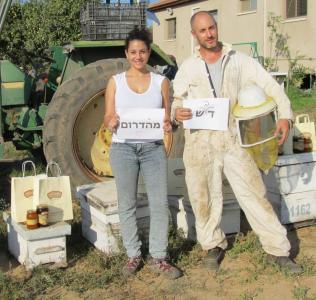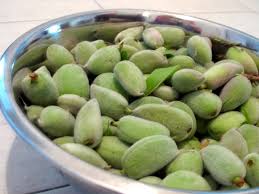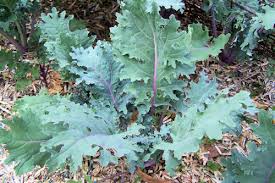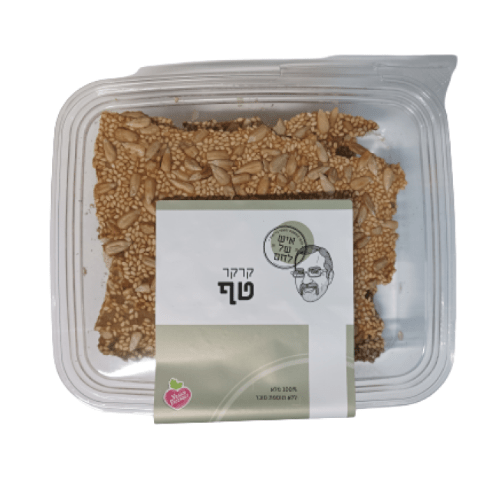Hi,
First of all, important messages for the holidays:
1. I'm reminding you to send us by e-mail by Thursday the addresses of your dear ones to whom you would like us to send a gift basket. We need to add them to the appropriate delivery route. We deliver to all the Jerusalem area and up to Herzliya, including almost everything in between.
2. Changes for the holiday. This will happen next week!
Whoever receives a box on Sunday, must place his order by Friday at 10:00am !!!
Everybody else needs to place their orders no later than 12:00 noon on the day before delivery.
Please remember to order this week, immediately upon receipt of you box, what you want for next week.
This week the online ordering system will be open the day that you get your delivery. There you can also see when your next delivery is, and until when you can make your order.
Changes for the weeks of Rosh Hashana and Succot. Please read carefully !!!!
Orders may be made until 12: 00 noon on the day before delivery. Recipients on Sunday must order by Friday at 10:00am
|
Usually receive on |
Route name |
Changed to: |
|
Monday |
Jerusalem |
Monday |
|
Monday |
outskirts of Jerusalem |
Monday |
|
Monday |
The gush and Tekoa |
Monday, not on Hol Hamoed |
|
Monday |
Shilo and Maale Adumim |
Sunday |
|
Tuesday |
Tel Aviv |
Tuesday |
|
Tuesday |
Rehovot |
Tuesday |
|
Tuesday |
Emek Ha'ela |
Sunday |
|
Wednesday |
Jerusalem |
Sunday |
|
Wednesday |
Moshavim |
Monday |
|
Wednesday |
Beit Shemesh |
Monday |
|
Wednesday |
Maggie |
Monday |
|
Thursday |
Gush Dan |
Sunday |
|
Thursday |
Nataf |
Tuesday |
|
Thursday |
Jerusalem |
Tuesday |
* Please be patient regarding time of arrival to you – we are packing four days of work into 3 days 🙂
"MAY WE RENEW FOR US A GOOD AND SWEET YEAR"
Apples in honey
Honey: the only natural product with a long shelf life. Wשד כםומג ןמ איק Pןרשצןגד 🙁 Our honey comes from Ido ("Honey of Ido") which is our beekeeper. I know Ido via his bees that visit in our garden. They fill our garden with a buzzing tune (they love the flowers of gourds) and they are the animals without whose work most of the world's plants would not be producing food for us at all!
Ido and Dana (and new daughter Carmel) are from moshav Klahim – and send us D(v)ash from the south (See their photo below). However, their hives are spread throughout the country. They are also here, at the Zalabani, a few hundred meters from our garden. A bee’s grazing area is about 1.5 km around his hive.
A bit from them about this wonderful stuff:
Honey contains essential nutrients that are important to animals as well as plants, and hence the clear preference for the use of honey to sweeten over white sugar, which contains nothing but sucrose. Moreover, despite that honey is up to three times sweeter than sugar, it contains 320 calories per hundred grams, compared to 400 calories in sugar, so it is considered a great natural sweetener.
Honey is low in fatty acids, and contains vitamin B1 (thiamine), B2 (riboflavin), B3 (niacin), B5 (pantonaic acid), B6 (pyridoxine), B8 (biotin), B9 (folic acid) and vitamin C (ascorbic acid).
It also contains the minerals calcium, phosphorus, magnesium, manganese, chlorine, iron, copper, potassium, silicon, sulfur, sodium and more.
They say that honey has medicinal properties, is it true?
Honey (that was not heated!) is recognized in folk medicine as a remedy with antiseptic properties and is effective against bacteria and fungi. Honey helps heal mouth sores and prevents gingivitis, among other things, due to the presence of the enzyme glucose oxidase, an enzyme that helps in creating hydrogen peroxide which inhibits bacterial culture in the mouth and gums.
In addition, because honey is relatively acidic, it is very effective in delaying the growth of bacteria and fungus on the skin. Applying honey on wounds, sores and burns prevents harmful microorganisms from reproducing and destroys bacteria and fungus in the wound, with no need for additional antibiotics. Honey speeds up the blood flow and encourages the growth of new cells. You can apply it directly on lightly injured skin and cover with a bandage.
Honey treats respiratory diseases. To fight a dry cough and wet cough – Mix honey with egg yolk in a glass of warm milk. Another mixture that helps get rid of mucus and coughing: Cut onion into small pieces, crush a clove of garlic and mix with 2 tablespoons honey. Allow the mixture to sit 2 hours and then drink the syrup. This syrup clears the throat.
Honey also has a high value in healing the gastrointestinal system. Due to its special composition of both high sugar content and high level of antioxidants, honey helps in cases of gastric ulcers. It replenishes the mucosal layer made of a glycoprotein (protein and sugar) which coats the stomach and thus reduces the rate of growth of harmful bacteria in the digestive tract.
What is pollen and what is it used for?
When the bees gather food outside, they return to the hive with both nectar as a source of sugars (carbohydrates) and pollen as a source of protein.
When the bee goes into a flower it touches the pollen and much of the pollen grains cling to its body. Later it cleans itself by combing its body with its legs and compresses the pollen into blocks and carries them back to the hive, where it stores them in the cells of the honeycomb.
Pollen is a whole food supplement from plants which is rich in amino acids essential for our body, minerals and vitamins, especially B12. Pollen consumption helps lower cholesterol, treats prostate problems, nourishes skin and more.
The chemical composition and the color of pollen vary with the season and the type of flowers from which the pollen grains are collected.
What do we mean when we say fake honey?
Certain consumers sometimes claim that their honey has crystallized and is basically sugar.
The very crystallization of the honey in the jar actually indicates its good quality and the fact that it was not heated.
The crystallization of honey happens because of the presence of pollen, in small concentrations, in the honey. When the temperature drops this pollen creates a spot to begin crystallization with the elements of honey. Some honey producers heat the honey to very high temperatures in order to keep it in liquid form to easily pass through the pipeline and filters in the plant. Heating affects the nutritional value of honey as high temperature destroys many proteins and vitamins found in honey.
During the winter season, some beekeepers supply the hive with sugar mixed with water to replenish the shortage that was caused by the beekeeper taking all the honey during the spring and summer. Some beekeepers continue with this sugar feeding into the spring season so then the bees actually consume sugar in addition to nectar and produce honey that is not entirely from the nectar of natural flowers.
Honey derived from sugar water and real honey do not differ by look or taste, they can be identified only by a laboratory test.
"An apple a day keeps the doctor away "
An organic apple of course,
Eating an organic apple a day will work wonders! – The Rambam said something like that.
The apple is rich in vitamins and minerals as are many fruits. However, the apple peel contains pectin, a soluble dietary fiber with much medicinal value – it has anti cancer properties, it improves the ratio between the cholesterols, it helps remove harmful substances from the gastrointestinal tract by absorbing them , it assists metabolism and it regulates bowel movements. Accordingly, Eating apples and honey before the meal will help digestion of your holiday dinner J
Apples are also nutritious. They contain potassium, iron, Vitamin A, Vitamin B group and Vitamin C. Also antioxidant bioflavinoids.
The apple is an integral component of most cleansing and toxin removal programs in use today and they create a basic (opposed to acidic) reaction in the body.
Have a good sweet year, of growth and fertility and health.
May you succeed in all,
Yours,
Maggie and the garden team
Our Gift Baskets will look like this:
Olive oil, honey, dates, pomegranates, apples, a range of pumpkins …
Expect in our weekly baskets (draft only):
Eggplant
Lettuce
Tomatoes
Cucumbers
Yams
Onion
Potatoes
Peppers
Basil
Larger ones also:
Cabbage
Parsley
And pumpkin
Fruit baskets:
Pears and Mangoes
Larger ones also:
More Mangoes and Pomegranits












